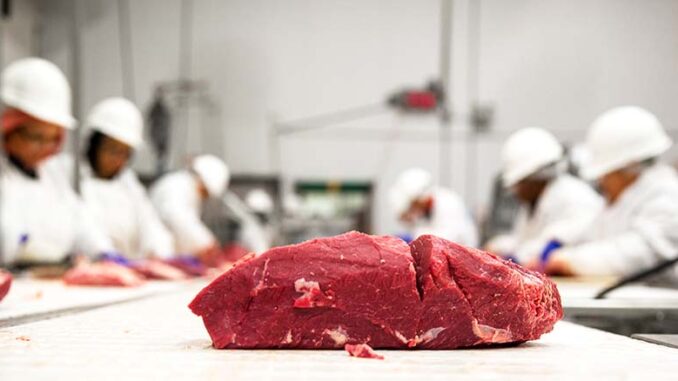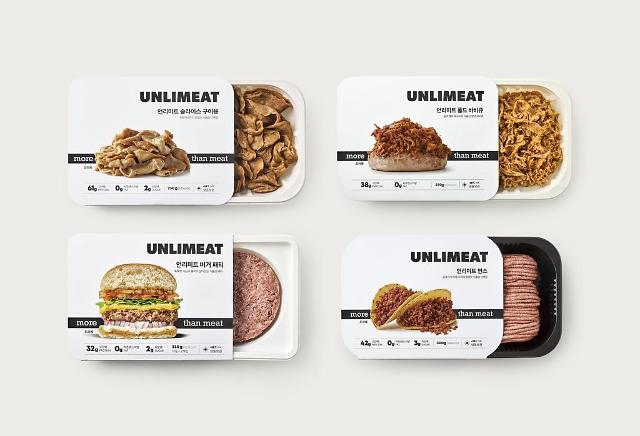According to a report by Altus Market Research titled, “Meat Products Global Market 2022 Opportunities And Strategies To 2031: By Type: (Pork; Mutton; Beef; Others); By Distribution Channel: (Supermarkets/Hypermarkets; Convenience Stores; E-Commerce; Others); By Product Type; By Nature: Organic; Conventional”, the global meat products market size reached a value of nearly $1,091.4 billion in 2021, having increased at a compound annual growth rate (CAGR) of 9.4% since 2016. The market is expected to grow at a CAGR of 7.2% from 2021 to reach $1,546.0 billion in 2026. The global meat products market is expected to reach $2,094.5 billion in 2031, at a CAGR of 6.3%.

Market Growth by Key Players:
The meat products market is fairly fragmented with a large number of players in the market. The top ten competitors in the market made up to 12.69% of the total market in 2021. Major players in the market include JBS S.A., Tyson Foods Inc., WH Group, Marfrig Global Foods S.A., Danish Crown and others.
Other Players Covered in the report
Player adopted strategies include strategic acquisition of emerging, strategic partnership, expanding its product portfolio, through the establishment of new processing and facilities, enhancing its operational capabilities, and through investments in new automation technologies.
Market Growth Drivers:
Growth in the historic period resulted from increased demand for flavored meat products, low-interest rates, a rise in disposable income, and emerging markets growth. Factors that negatively affected growth in the historic period were shortage of labor and geo-political tensions. Going forward, a rise in the global population and continued technology development is expected to be the major drivers of the market. Factors that could hinder the growth of the meat products market in the future include carcinogenic effects of processed meat, climate change, and global warming, increased preference of poultry, and the impact of COVID-19.
Market Growth by Segments:
The meat products market is segmented by type into pork, mutton, beef and other meat products. The beef market was the largest segment of the meat products market segmented by type, accounting for 44.5% of the total in 2021. The pork market is expected to be the fastest growing segment, at a CAGR of 8.7% during 2021-2026.

Market Growth distribution channel
The meat products market is also segmented by distribution channel into supermarkets/hypermarkets, convenience stores, e-commerce, and others. The supermarkets/hypermarkets market was the largest segment of the meat products market segmented by distribution channel, accounting for 50.2% of the total in 2021. The e-commerce market is expected to be the fastest growing segment, at a CAGR of 15.8% during 2021-2026.
The meat products market is also segmented by product type into chilled, frozen and canned/preserved. The canned/preserved market was the largest segment of the meat products market segmented by product type, accounting for 52.7% of the total in 2021. The chilled market is expected to be the fastest growing segment, at a CAGR of 8.1% during 2021-2026.
The meat products market is also segmented by nature into organic and conventional. The conventional market was the largest segment of the meat products market segmented by end-use, accounting for 95.3% of the total in 2021. The organic market is expected to be the fastest growing segment, at a CAGR of 13.9% during 2021-2026.
Market Growth by Region:
The Asia Pacific was the largest region in the global meat products market, accounting for 50.8% of the total in 2021. It was followed by North America, Western Europe, and then the other regions. Going forward, the fastest-growing regions in the meat products market will be Africa and South America where growth will be at CAGRs of 9.2% and 9.0% respectively.
Future Investment Opportunities:
The top opportunities in the meat products market segmented by type will arise in the pork segment, which will gain $248.6 billion of global annual sales by 2026. The top opportunities in the meat products market segmented by distribution channel will arise in the supermarkets/hypermarkets segment, which will gain $216.4 billion of global annual sales by 2026.
The top opportunities in the meat products market segmented by product type will arise in the canned/preserved segment, which will gain $254.9 billion of global annual sales by 2026. The top opportunities in the meat products market by nature will arise in the conventional market, which will gain $407.2 billion by 2026. The meat products market size will gain the most in China at $192.6 billion.

Market: Trend-based Strategies
Market-trend-based strategies for the meat products market include investing in robotics technology, considering making new ready-to-eat variants, considering producing plant-based alternatives to lessen environmental impact, considering integrating 3D imaging systems, investing in virtual reality to increase efficiency, considering offering online delivery services, considering artificial intelligence technology to increase the productivity of meat processing and quality and safety of the meat product, monitoring developments in cultured meat technology, and exploit transformational opportunities from the developments in nanotechnology in the food industry.
Growth Strategies by Altus Market Research for Companies in the Market:
To take advantage of the opportunities, Altus Market Research recommends the meat products companies to focus on ready-to-eat meals, offer plant-based meat products, invest in robotics technology, increase the use of 3D imaging systems, focus on nanotechnology in meat production, focus extensively on emerging economies, expand in developed markets, offer competitively priced products, target local retail stores and supermarkets, focus on prime shelf positions in stores, leverage social media, focus on offering meat products through online channels and target health-conscious population.











